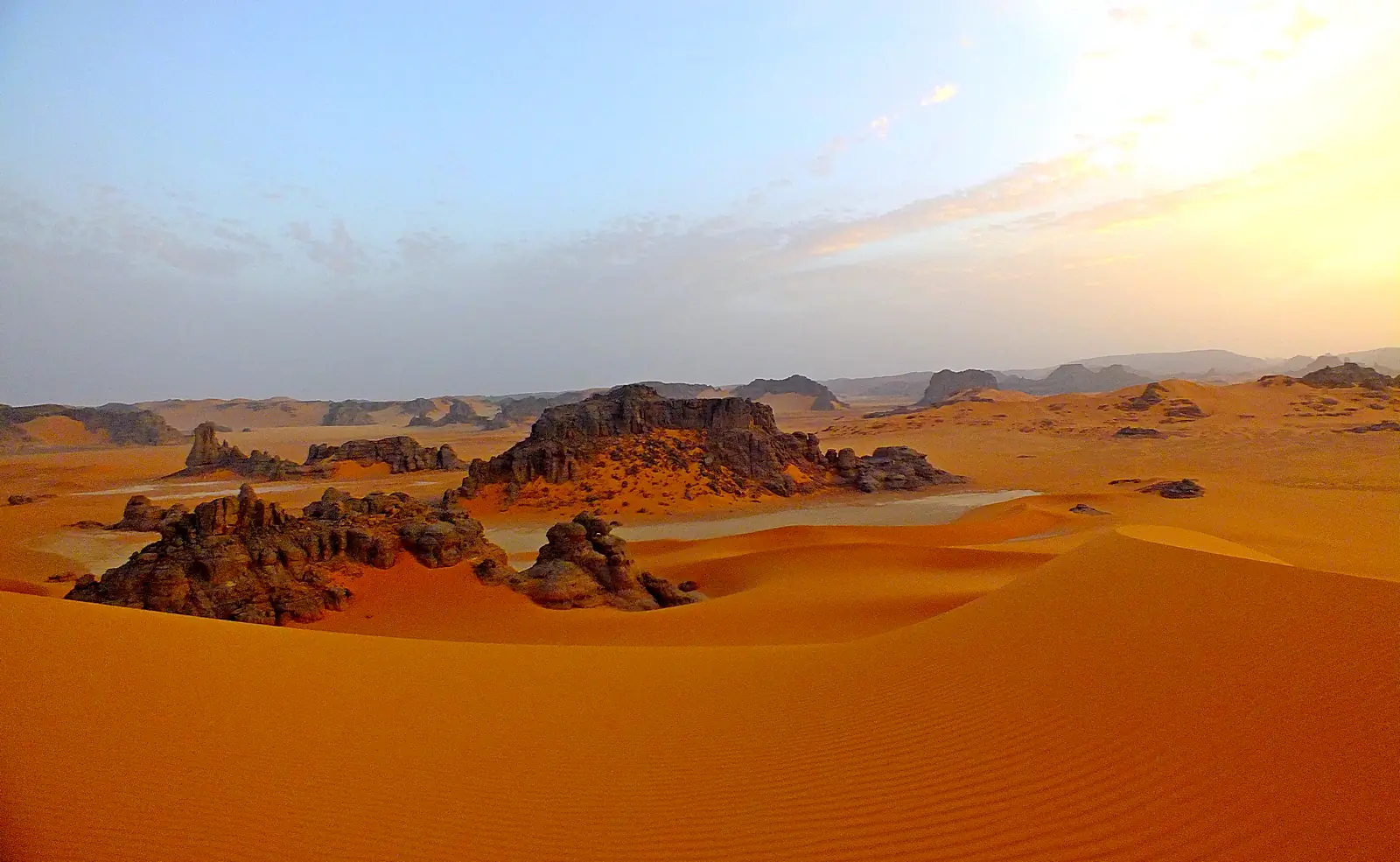
Tassili n'Ajjer's Ancient Rock Art in Saharan Canyons
Prehistoric Canvas of Human Evolution in the Desert
About This Site
Tassili n'Ajjer represents an extraordinary fusion of cultural and natural heritage, showcasing humanity's artistic genius through approximately 15,000 prehistoric rock paintings and engravings whilst demonstrating exceptional geological beauty in its dramatic sandstone formations. This vast plateau preserves an invaluable visual record of climate change, wildlife migrations, and human cultural evolution spanning 12,000 years. The transition from hunter-gatherer societies to pastoral communities makes it one of the world's most important archaeological sites. As a UNESCO Mixed Heritage Site, Tassili n'Ajjer offers visitors a unique window into ancient Saharan life when this now-arid desert supported diverse wildlife and thriving human populations through its "forests of rock" and prehistoric artistic masterpieces.
Why It Matters
This exceptional site demonstrates outstanding universal value as a masterpiece of prehistoric artistic creativity spanning 12,000 years of human evolution, providing unique testimony to vanished Saharan cultures whilst representing superlative natural beauty through its eroded sandstone landscapes and serving as an outstanding example of Earth's geological history.
Ancient Art and Geological Marvels of the Sahara
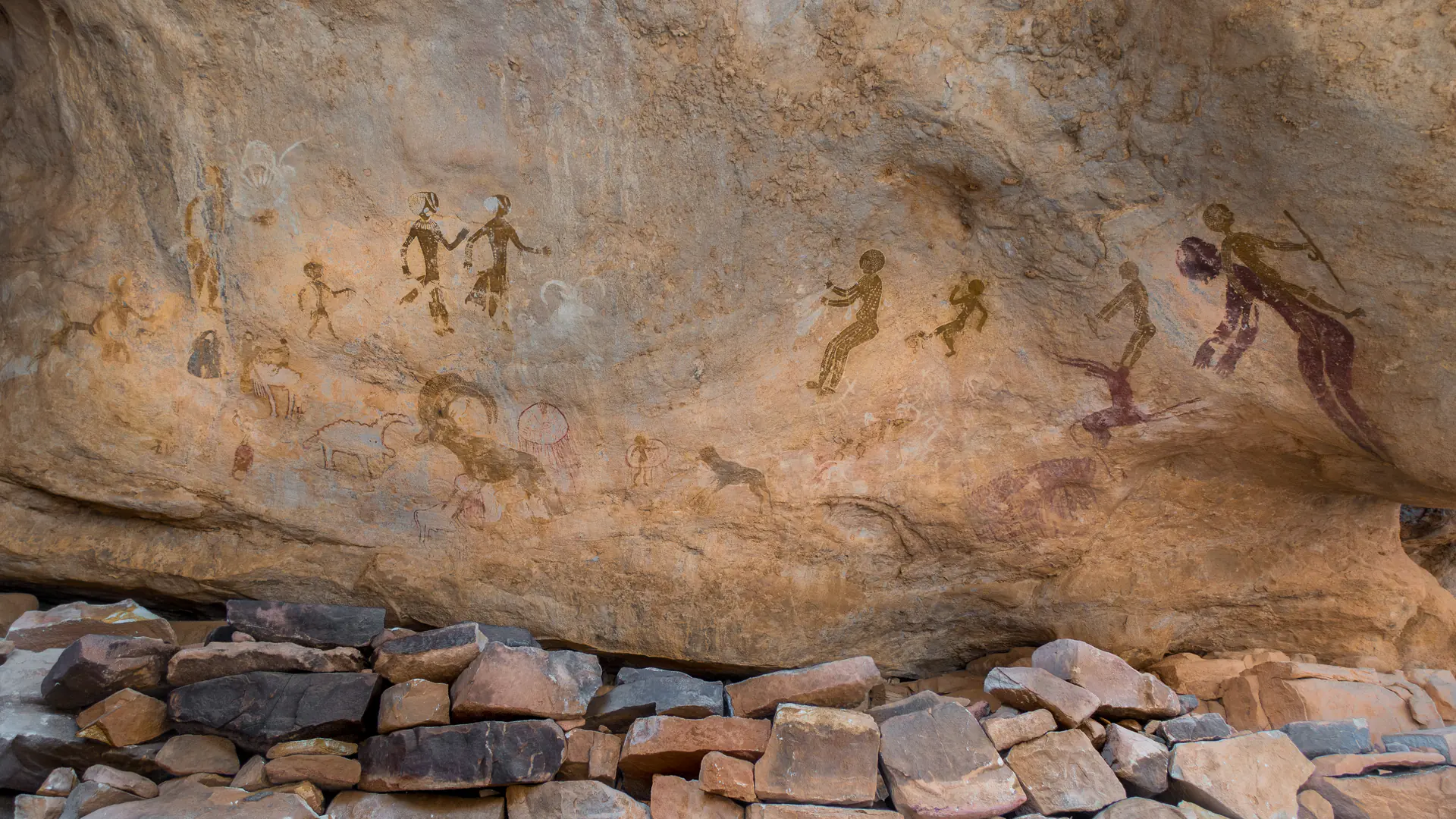
Prehistoric Rock Art Masterpieces
Explore one of the world's most extensive collections of prehistoric rock art, featuring approximately 15,000 paintings and engravings spanning 12,000 years of human artistic expression. These remarkable artworks document the gradual transformation of the Sahara from fertile savannah to desert, depicting large wild animals including elephants, rhinoceros, hippopotamus, and crocodiles that once thrived in this region. The art progresses through five distinct periods: the Archaic hunters, the mysterious Round Head figures, the Pastoral Bovidian cattle herders, the Horse period reflecting new cultural influences, and finally the Camel period marking adaptation to increasing aridity. These visual narratives provide invaluable insights into prehistoric societies, their hunting techniques, ceremonial practices, and daily life activities that would otherwise remain unknown to modern archaeology.
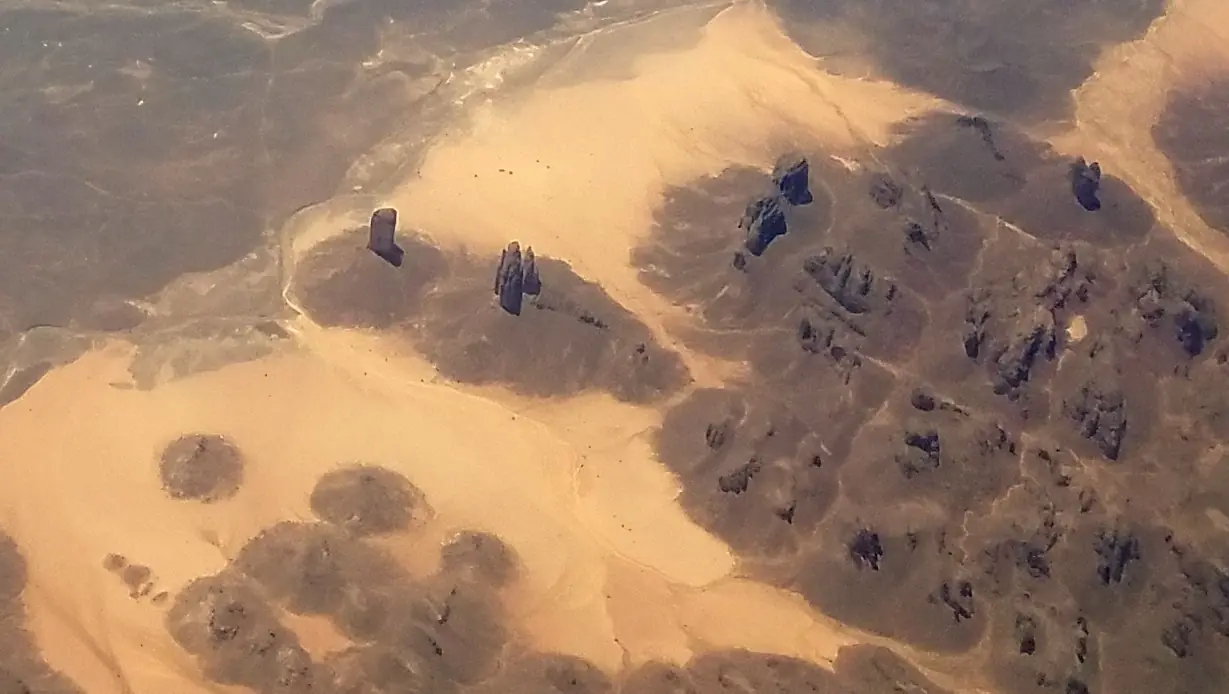
Eroded Sandstone "Rock Forests"
Marvel at the extraordinary geological formations that give Tassili n'Ajjer its distinctive character through millennia of erosion. These dramatic sandstone structures include nearly 300 natural rock arches, towering columns rising from the desert floor, and deep canyons carved by ancient waterways. The rocks display spectacular colouration from metallic oxide staining, ranging from near-black manganese to brilliant reds and oranges from iron. These formations create a surreal "forest" of stone pillars serving as natural galleries for prehistoric rock art. The geological diversity reflects complex depositional environments and erosion processes spanning millions of years.
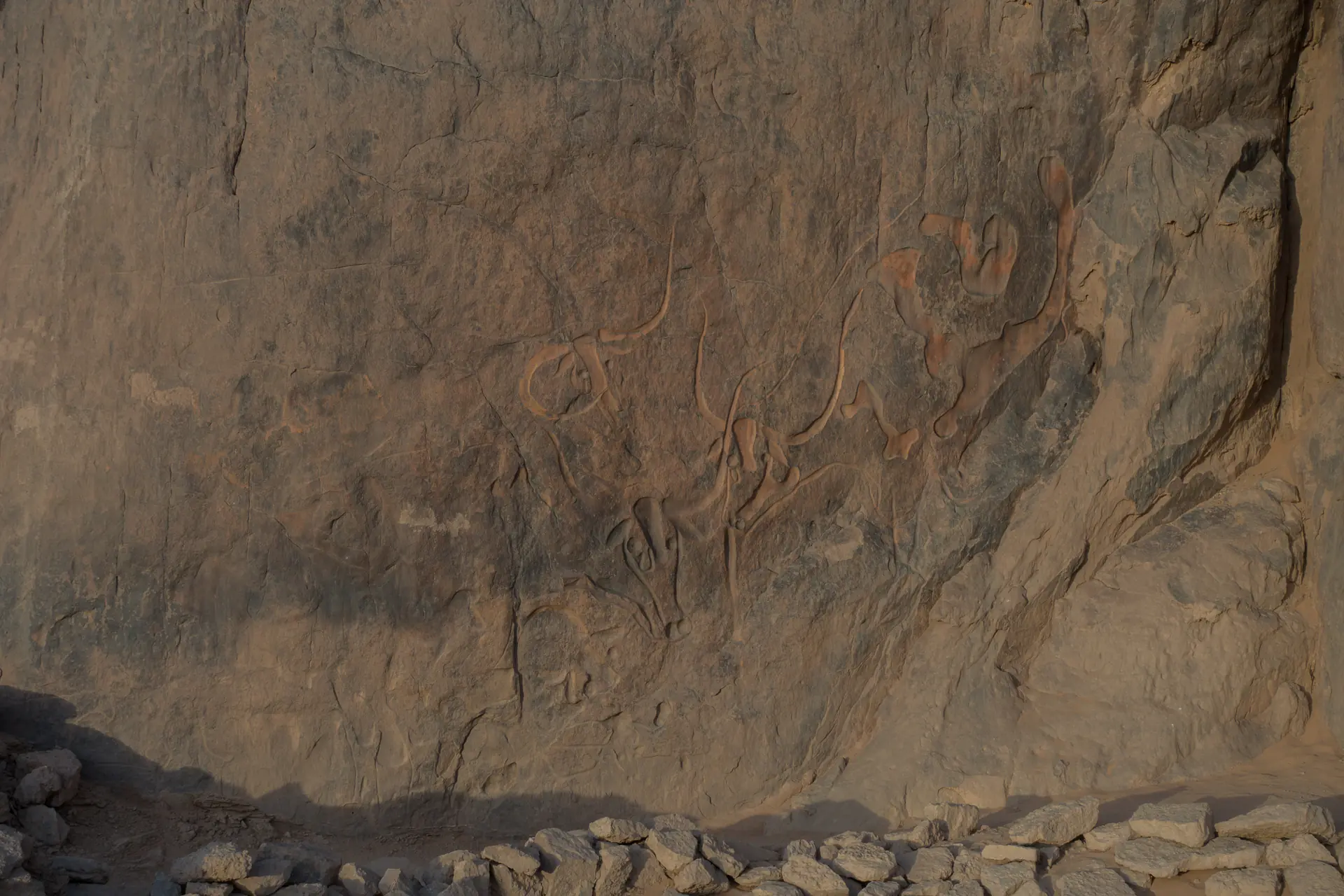
Cultural Heritage and Climate Documentation
Discover how Tassili n'Ajjer's rock art provides unique scientific documentation of dramatic climate change. The earliest artworks depict large savannah animals and river species indicating a wetter climate with permanent water sources supporting diverse wildlife. Progressive artistic periods show the gradual introduction of cattle herding, then horses, and finally camels as the region transformed into desert, providing visual evidence of human adaptation to environmental change. The famous "Crying Cow of Taghrirt" showcases the importance of cattle to pastoral societies, whilst later periods document cultural shifts as communities adapted to aridity.
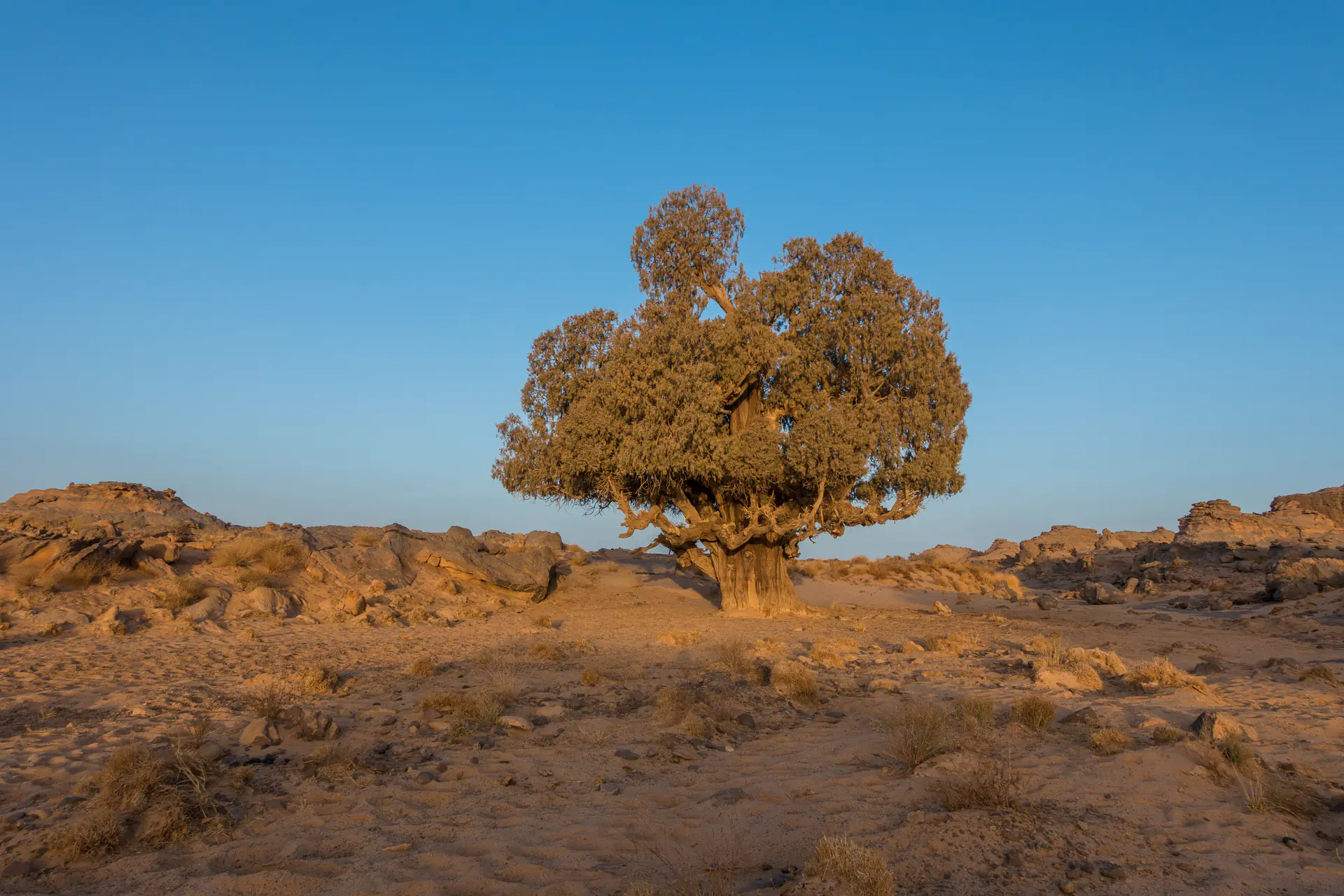
Endangered Saharan Cypress Groves
Encounter one of Earth's rarest tree species through the endangered Saharan cypress (Cupressus dupreziana) that survives in isolated groves within Tassili n'Ajjer. These remarkable trees represent living relics from wetter climatic periods, adapted to extreme desert conditions through deep root systems accessing underground water sources. With only approximately 233 mature trees remaining in the wild, these ancient specimens can live over 2,000 years and provide critical ecological refugia for desert wildlife. The cypress groves demonstrate how pockets of higher elevation and specific microclimates within Tassili n'Ajjer support vegetation communities that have disappeared elsewhere in the Sahara, making the site invaluable for understanding desert ecosystem evolution and providing hope for conservation of endangered species in harsh environments.
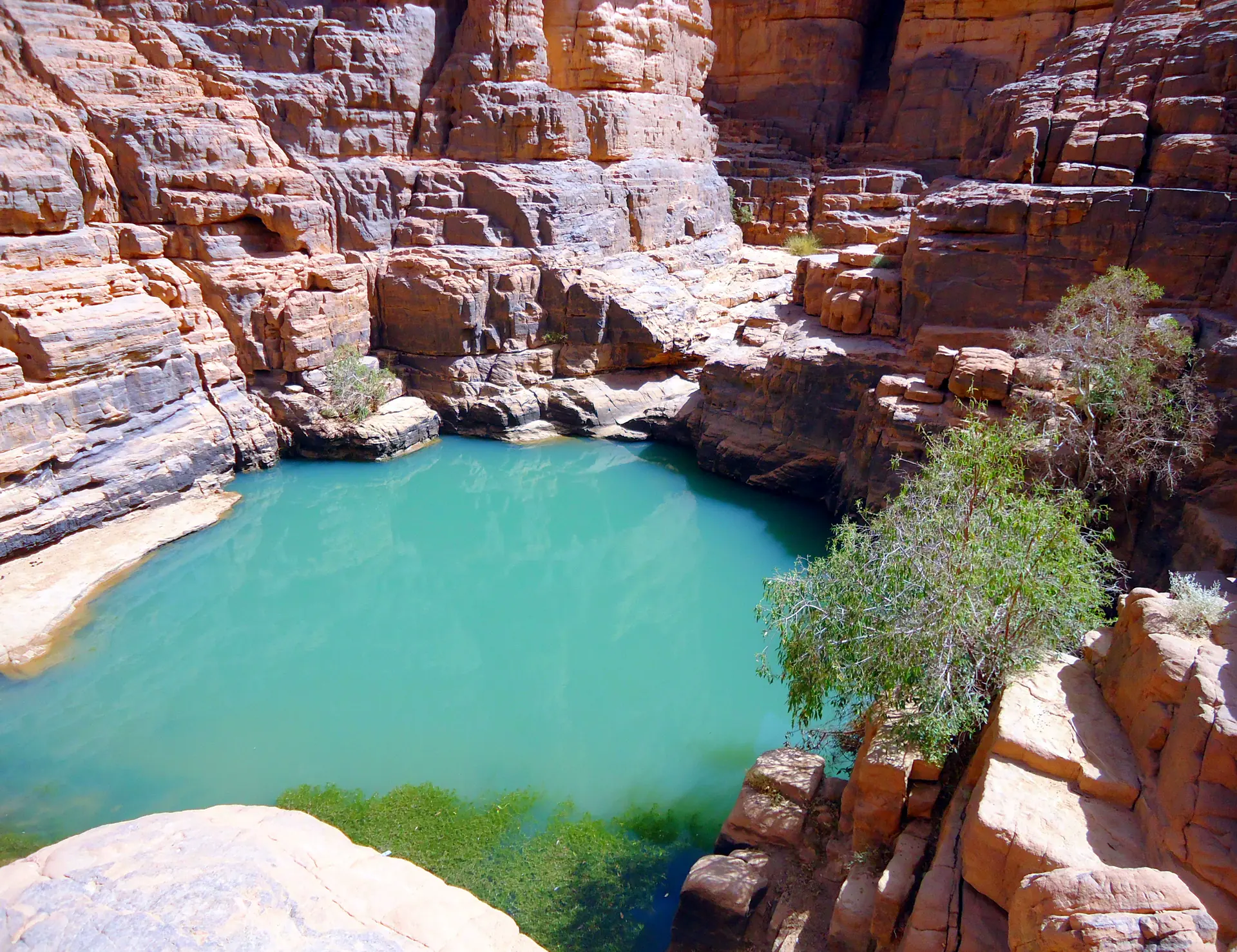
Deep Canyon Landscapes
Trek through spectacular canyons carved by ancient rivers that once flowed through Tassili n'Ajjer when the Sahara supported permanent water systems. The Canyon de Tikoubaouine and similar formations feature towering sandstone cliff walls reaching heights of 80-100 metres, creating dramatic corridors through the plateau. These geological features provide insights into erosion processes and past hydrological systems whilst offering spectacular hiking opportunities through varied terrain. The canyon walls often contain rock art sites positioned to take advantage of natural rock shelters and overhangs that protected the paintings from weathering. Walking these ancient waterways connects visitors to the dramatically different landscape that prehistoric inhabitants experienced, when seasonal floods carved these channels and supported the wildlife depicted in surrounding rock art.
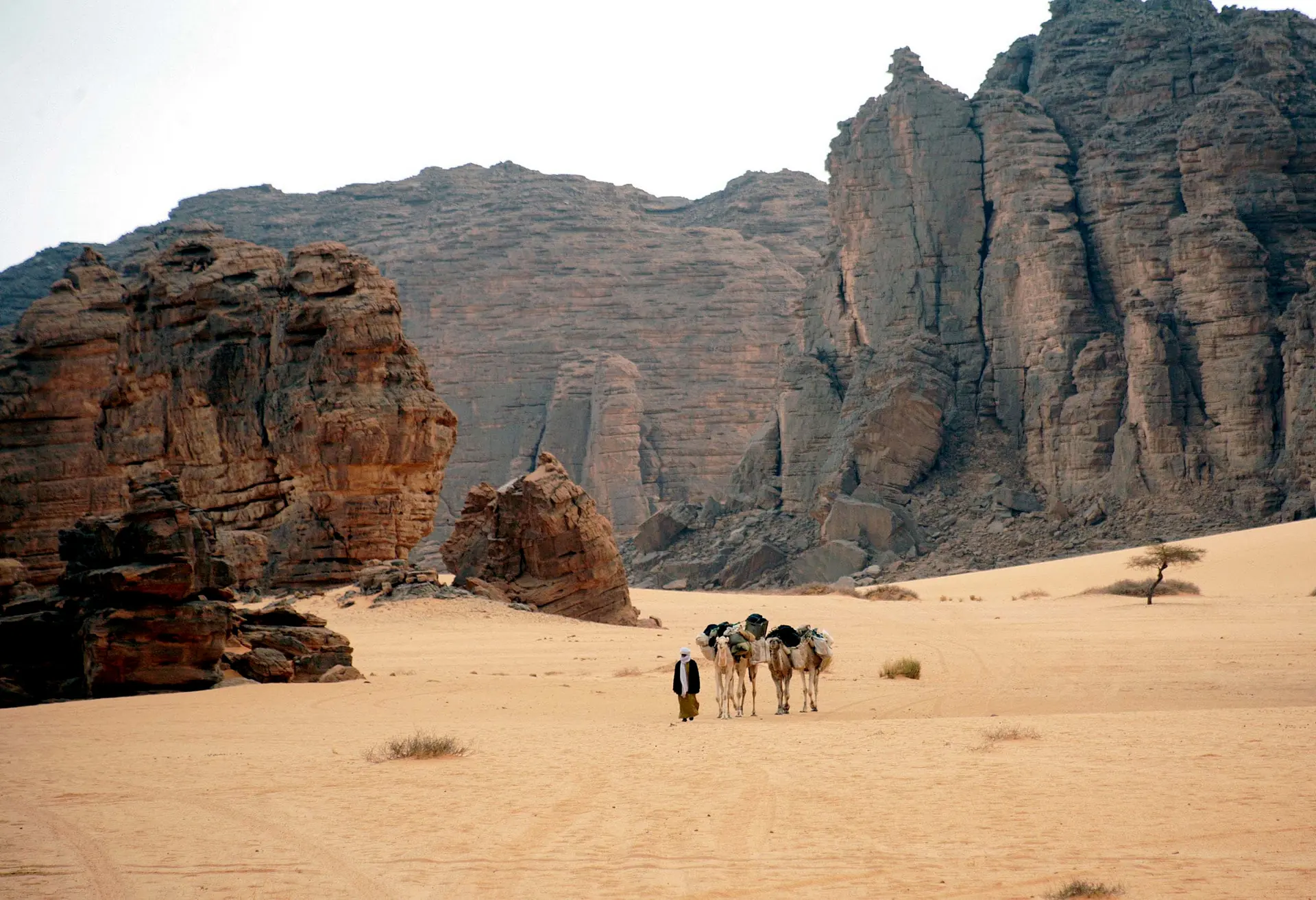
Expansive Desert Wilderness
Experience the vast scale and remote beauty of one of Africa's largest protected desert wilderness areas, where 72,000 square kilometres of sandstone plateau extend across southeastern Algeria. The immense landscape features dramatic variations in terrain, from towering rock formations to expansive sand plains, creating constantly changing vistas across the horizon. The isolation and minimal human development preserve authentic desert wilderness characteristics increasingly rare in our modern world. Multi-day trekking expeditions reveal how the landscape transitions between different geological zones, whilst night skies unpolluted by artificial light offer extraordinary astronomical viewing. This wilderness character protects both the prehistoric rock art and natural ecosystems from the pressures of modern development, maintaining Tassili n'Ajjer as one of Earth's most pristine desert environments.
Location & Planning
Access from Djanet. Book government-approved guided tours 8-12 weeks ahead through authorised operators. Multi-day expeditions cost $150-300 per person daily including permits, guides, and camping equipment. Substantial physical fitness required for desert trekking.
Loading map...
Frequently Asked Questions
Tassili n'Ajjer is a vast Saharan plateau in Algeria famous for approximately 15,000 prehistoric rock paintings and engravings documenting 12,000 years of cultural evolution, combined with spectacular eroded sandstone formations creating dramatic "forests of rock".
Prehistoric societies created the rock art beginning around 10,000 BC through to early Islamic periods. Artists progressed from Archaic hunters depicting large wildlife to Bovidian cattle herders, Horse period cultures, and finally Camel period desert nomads.
All visits require government-approved guided tours booked through authorised operators in Djanet, located 10 kilometres from the park. Independent travel is strictly prohibited. Multi-day expeditions cost $150-300 per person daily including permits, guides, and camping equipment.
October through April offers ideal conditions with moderate daytime temperatures of 20-25°C, particularly November and February. Summer months (May-September) experience extreme heat exceeding 40°C, whilst winter nights can drop to freezing at higher elevations requiring proper gear.
Yes, permits are mandatory and arranged through government-approved tour operators based in Djanet. Independent travel is prohibited. Book 8-12 weeks in advance, particularly for peak season (October-April). Tour operators handle all official authorisations from park authorities.
Essential items include desert trekking boots, sleeping bag rated for freezing temperatures, comprehensive sun protection, layers for extreme temperature variations, camera dust protection, personal medications, and adequate water supplies. Physical fitness required for multi-day trekking.
The name refers to dramatic eroded sandstone formations resembling forests of stone columns and arches. These geological features were created through millennia of wind and water erosion, producing nearly 300 natural rock arches and towering pillars.
UNESCO World Heritage Criteria
Inscribed in 1982, this site meets 4 of UNESCO's 10 criteria for Outstanding Universal Value
Criterion (i): Masterpiece of human creative genius
Tassili n'Ajjer represents a masterpiece of human artistic genius through approximately 15,000 prehistoric rock paintings and engravings spanning 12,000 years, documenting hunting techniques, ceremonial practices, and daily life with extraordinary artistic sophistication revealing vanished Saharan cultures' creative achievements across five distinct stylistic periods.
Criterion (iii): Testimony to cultural tradition
The plateau provides unique testimony to Saharan cultures from hunter-gatherers through pastoral societies to desert nomads, representing humanity's adaptation to dramatic climate change whilst preserving visual documentation of the Sahara's transformation from fertile savannah supporting diverse megafauna to arid desert landscape.
Criterion (vii): Contains superlative natural phenomena
Tassili n'Ajjer contains superlative natural phenomena through its spectacular "forests of rock" featuring nearly 300 natural sandstone arches, dramatic eroded formations displaying vibrant mineral colouration, and vast desert wilderness creating otherworldly landscapes where geological and cultural heritage merge in extraordinary visual spectacles.
Criterion (viii): Outstanding geological processes
The site represents an outstanding example of Earth's geological history through exposed sedimentary layers documenting millions of years of deposition and erosion, whilst sandstone formations reveal wind and water erosion processes creating distinctive landforms that demonstrate fundamental geological principles governing desert landscape evolution.
Historical Context
Archaic Period (10,000-6,000 BC)
Earliest rock art depicts large wild fauna including now-extinct Saharan species like rhinoceros and elephants, created by hunter-gatherer communities when the region supported diverse wildlife and permanent water sources through wetter climate conditions with regular seasonal rainfall.
Round Head Period (6,000-4,000 BC)
Distinctive artistic style featuring human figures with round heads, possibly representing ritual or ceremonial scenes during gatherings. These mysterious paintings suggest complex spiritual beliefs and sophisticated social structures amongst Neolithic populations across the region with communal activities.
Bovidian/Pastoral Period (4,000-1,500 BC)
Extensive depictions of cattle herding and pastoral life document the transition to agriculture and animal domestication as climate became drier. The famous Crying Cow and numerous cattle scenes reflect the cultural importance of livestock to these societies.
Horse Period (1,500 BC-1 AD)
Introduction of horses and chariots in rock art indicates new cultural influences and technologies arriving through trade routes, possibly associated with proto-Berber populations. Art style becomes more stylised compared to earlier naturalistic depictions across previous periods.
Camel Period (1 AD-present)
Appearance of camels in rock art marks adaptation to increasing desert conditions and establishment of trans-Saharan trade routes across the region. Local Tuareg communities maintain cultural connections to the landscape through traditional desert survival knowledge passed through generations.
Modern Recognition (1933-present)
French explorer Henri Lhote's expeditions in the 1950s brought international attention to Tassili n'Ajjer's rock art. UNESCO World Heritage designation in 1982 recognised both cultural and natural values, whilst 1986 Biosphere Reserve status emphasised conservation importance.
Conservation & Protection
Current Conservation Status
Protected as UNESCO World Heritage Site (1982) and UNESCO-MAB Biosphere Reserve (1986), managed as Cultural Park under Algerian law since 2004 with support from Global Environment Facility conservation programmes.
Conservation Challenges
- Natural erosion of fragile rock art accelerated by weathering processes and occasional flash flooding in canyon systems threatening irreplaceable prehistoric paintings
- Enormous site size of 72,000 square kilometres presents management challenges with relatively limited staff and resources for comprehensive protection and monitoring
- Tourism pressure requires careful balance between providing access to this exceptional heritage whilst protecting fragile archaeological sites and natural ecosystems from damage
- Climate change impacts potentially accelerating erosion processes and affecting remnant endangered plant species like Saharan cypress that depend on specific microclimate conditions
Active Conservation Efforts
- Mandatory guided tour requirements ensuring visitors follow conservation protocols whilst supporting local communities through sustainable tourism employment and economic benefits
- Restricted access policies limiting visitor numbers and designating certain sensitive archaeological areas as off-limits to prevent overcrowding and physical damage to rock art
- International conservation partnerships with UNESCO, IUCN, and Global Environment Facility providing technical expertise, monitoring technologies, and funding for protection programmes
- Community-based management approaches engaging local Tuareg populations in park guardianship, drawing on traditional ecological knowledge for sustainable resource management and cultural heritage preservation
Image & Content Attribution
Research & Content Sources
Photography & Visual Media
Last updated: 11 October 2025